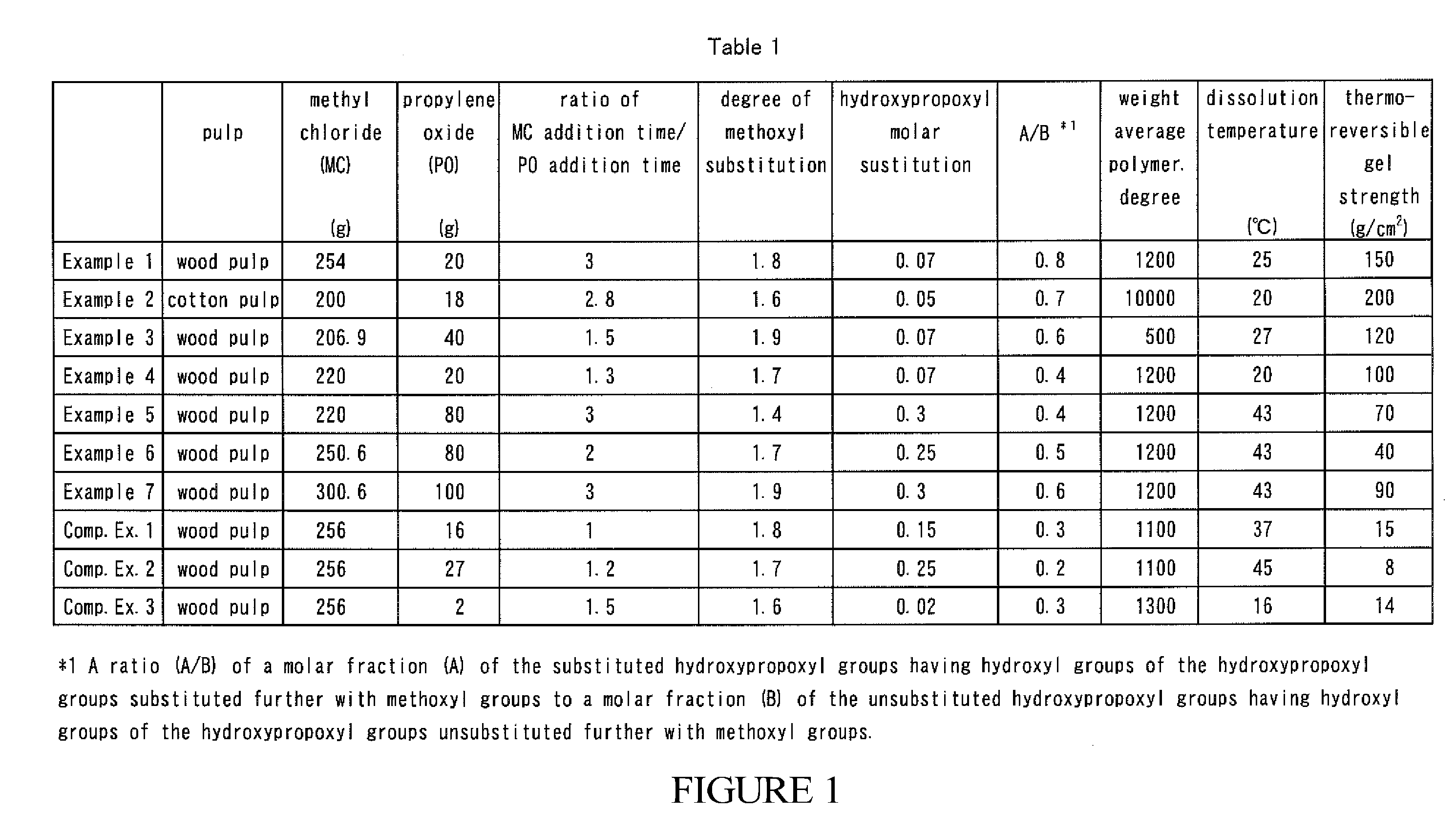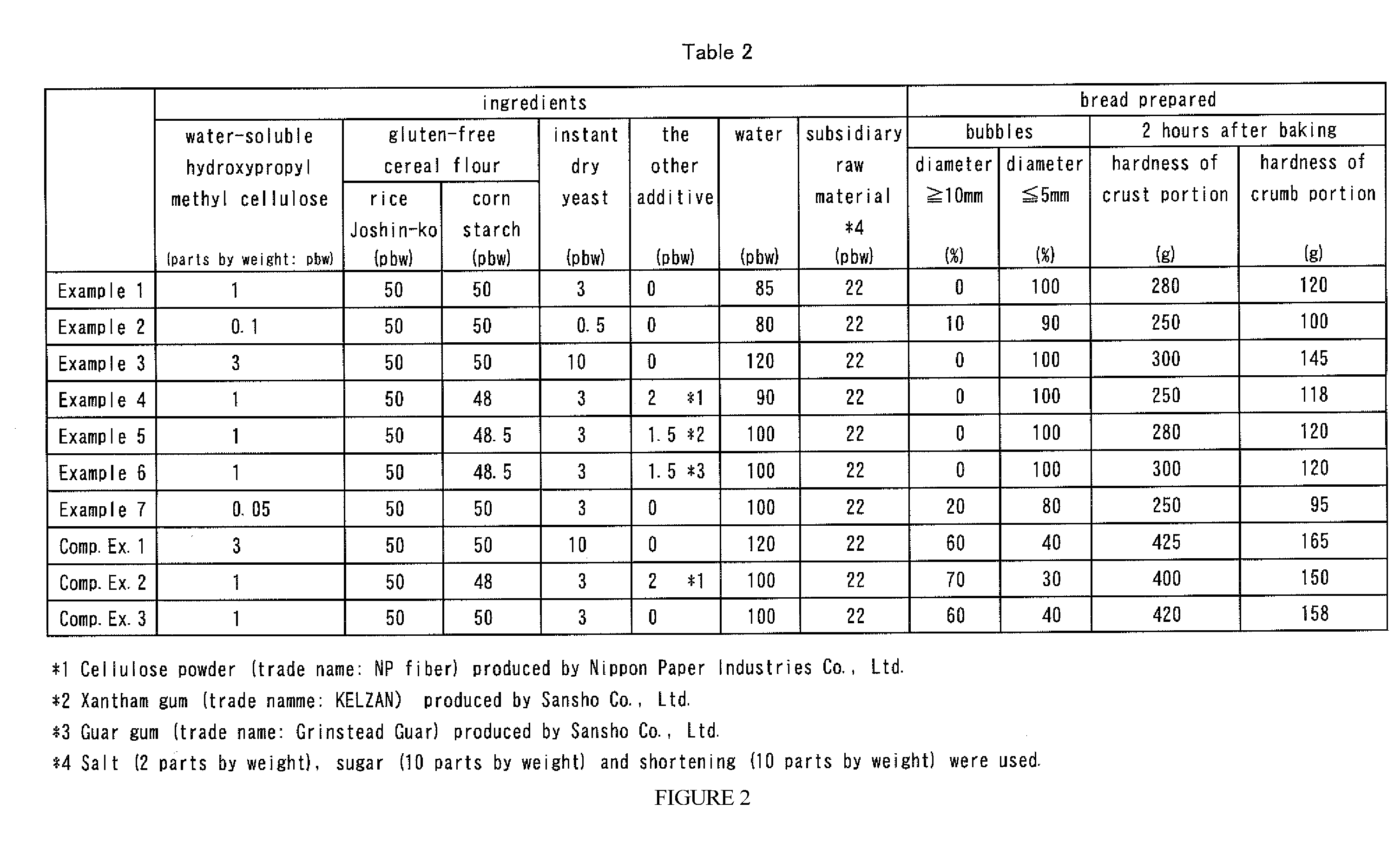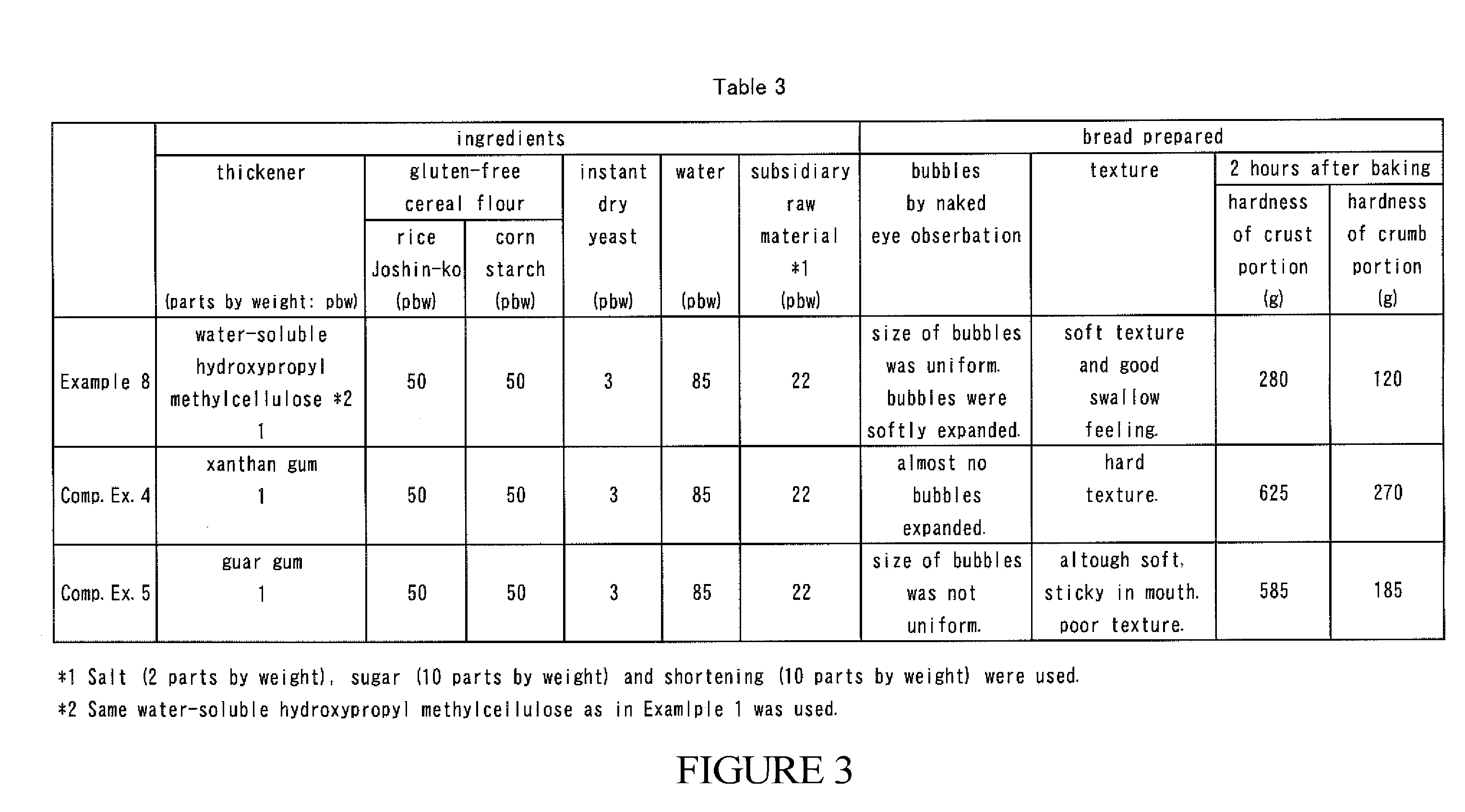Gluten-free dough composition
- Summary
- Abstract
- Description
- Claims
- Application Information
AI Technical Summary
Benefits of technology
Problems solved by technology
Method used
Image
Examples
example 1
Preparation of Hydroxypropyl Methylcellulose
[0056]Wood-derived high-purity dissolution pulp manufactured by Nippon Paper Industries Co., Ltd. was ground in a roller mill, sifted through a sieve having openings of 600 μm, and fed at a constant rate of 10 g / min to a twin-screw kneader “S1 KRC Kneader” (trade name; product by Kurimoto, Ltd., having a paddle diameter of 25 mm, an outer diameter of 255 mm, L / D=10.2, an inner volume of 0.12 liter and a rotation speed of 100 rpm). At the same time, a 49% by weight sodium hydroxide solution was fed at a constant rate of 21.5 g / min from an inlet provided at a pulp feed port so as to add the aqueous alkali solution to the cellulose. In such a manner, alkali cellulose was obtained.
[0057]Of the alkali cellulose obtained by continuous operation for about 30 minutes, a 585.0 g portion was placed in an autoclave equipped with a Ploughshare type internal agitating blade. After the pressure was reduced to −97 kPa, nitrogen was enclosed in the autocl...
PUM
 Login to View More
Login to View More Abstract
Description
Claims
Application Information
 Login to View More
Login to View More - R&D
- Intellectual Property
- Life Sciences
- Materials
- Tech Scout
- Unparalleled Data Quality
- Higher Quality Content
- 60% Fewer Hallucinations
Browse by: Latest US Patents, China's latest patents, Technical Efficacy Thesaurus, Application Domain, Technology Topic, Popular Technical Reports.
© 2025 PatSnap. All rights reserved.Legal|Privacy policy|Modern Slavery Act Transparency Statement|Sitemap|About US| Contact US: help@patsnap.com



